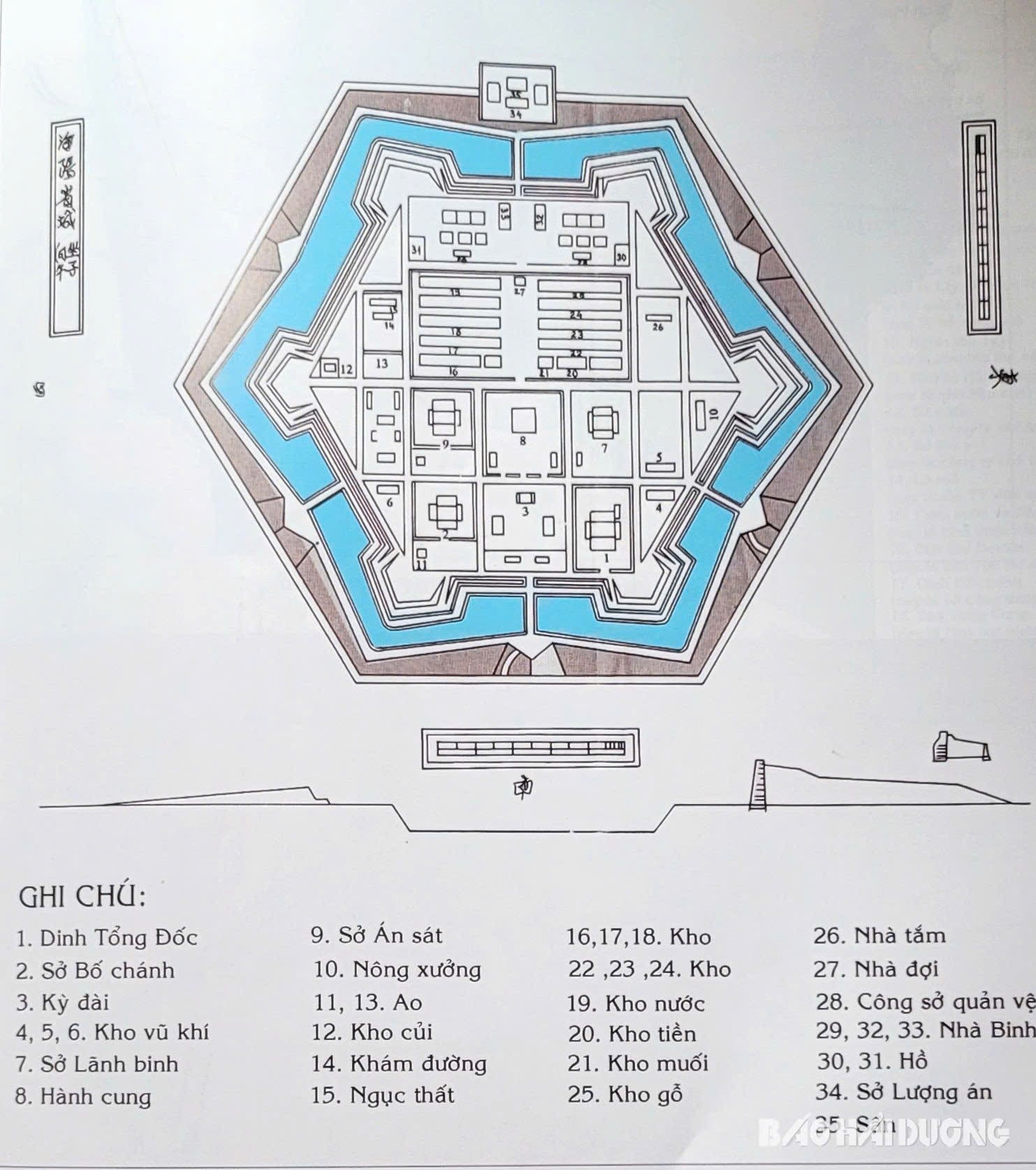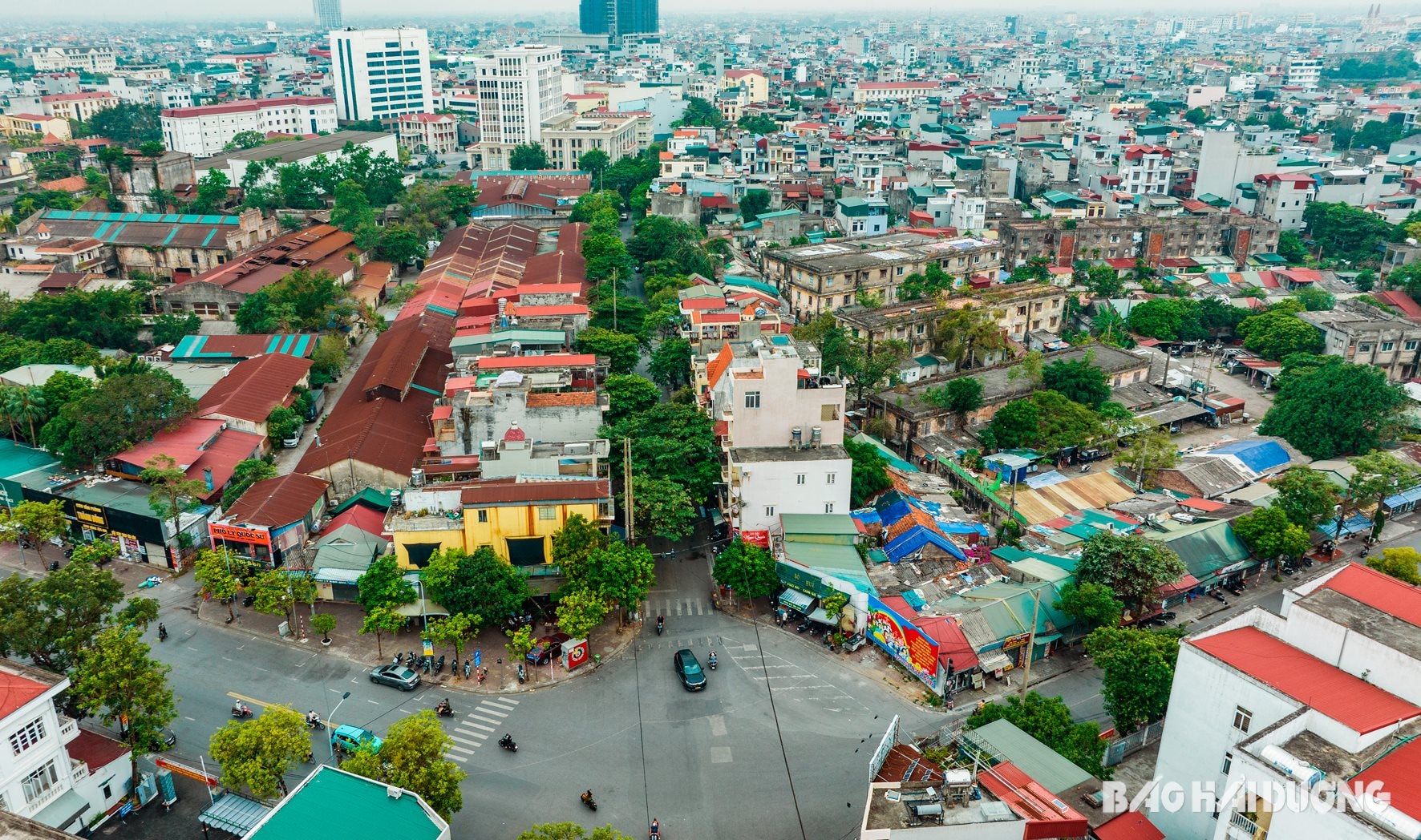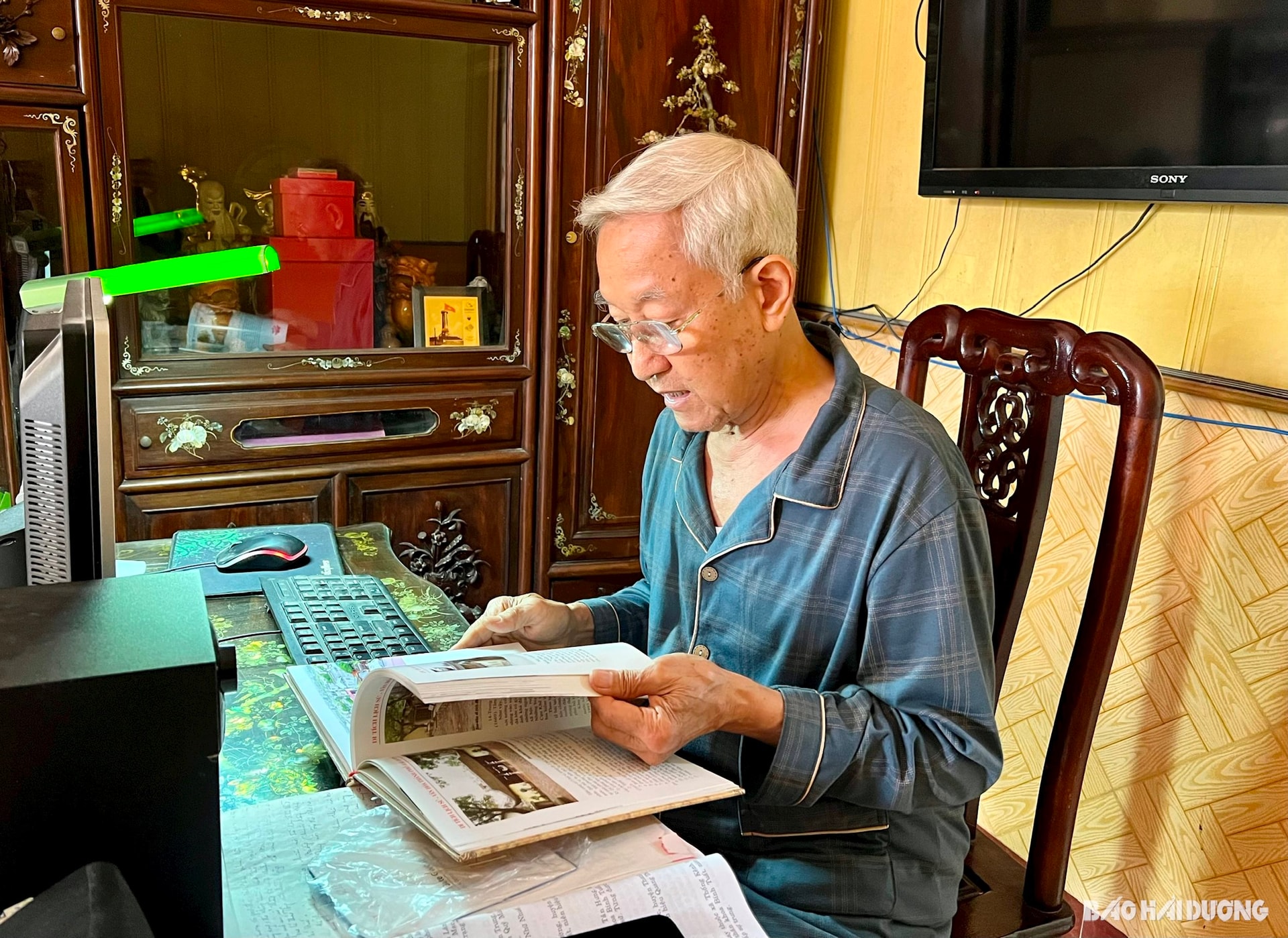As one of the four citadels protecting Thang Long citadel, the ancient Dong citadel once had a flagpole - a sacred and proud symbol, showing the position and importance of the Dong land.

Symbol of Thanh Dong
Going back in history, before 1804, Hai Duong's headquarters was located in Lac Thien (Chi Linh), called Van citadel or Van camp, then moved to Mao Dien (Cam Giang).
In 1804, King Gia Long decided to move the headquarters of Hai Duong town from Mao Dien 15 km east, at the confluence of Ke Sat and Thai Binh rivers, in the area of 3 communes Han Giang, Han Thuong and Binh Lao. The Hai Duong governor at that time, Tran Cong Hien, organized the move and built Hai Duong citadel, also known as Dong Citadel. During nearly a century of rule, the Nguyen Dynasty continuously consolidated Dong Citadel into a strong military fortress with the task of blocking enemy troops from entering from the sea.
Like the citadels built under the Nguyen Dynasty, the Eastern Citadel was built in the Vauban style. This is the method of building solid ramparts by French architects that was applied in some Western countries and colonies in the 17th-18th centuries. The citadel has a regular hexagonal shape, initially built with earth, and was reinforced with laterite during the reign of King Minh Mang. The citadel is 1 truong 1 thuoc 2 tac (4.48 m) high, and is surrounded by a deep moat outside. The moat connects to the Ke Sat River and then to the Thai Binh River through the Ba Cua sluice. The citadel has 4 gates in the 4 directions of east, west, south, and north. From the Eastern Citadel, to go outside, one must cross 4 brick bridges built in an arched style across the moat.

The symbol of the Eastern Citadel was the flagpole. This structure was the tallest in the Eastern region at that time, symbolizing the majesty of the strategic military land. The flagpole was built right at the entrance, next to the governor's palace and the garrison. On the first morning of the week, officials and soldiers would gather under the flagpole, facing south to show their respect to the king in the Hue Citadel.
In order to meet the needs of trade, Dong Kieu Street gradually formed in the area along the Sat River. Thanh Dong was not only a military stronghold but also a bustling, bustling trading center. Merchants, craftsmen, and residents gathered here to live and work. From then on, streets named after guilds and occupations were born, such as Hang Giay, Hang Bac, Hang Long, etc. Dong Kieu Street residents living outside the city always turned towards the flagpole at Thanh Dong, a solid, massive, and majestic place to express their gratitude.
In 1883, Thanh Dong fell into the hands of the French colonialists, and by the early 20th century, it was almost completely destroyed. The flagpole was also destroyed. According to some historical documents, the old Thanh Dong flagpole was built on Ney Guard Avenue, also known as De Lao Street, then changed to Nha Pha Street. Currently, this location is on Nguyen Trai Street (Hai Duong City) near the May Bom collective area.
Restoration concerns

Having devoted much effort to researching the history of Thanh Dong, Mr. Pham Quy Mui, former Director of the Political Training Center of Hai Duong City, is very concerned about the flagpole - a testament to the glorious development period of Thanh Dong. Turning each page of history records about Thanh Dong, Mr. Mui said that the flagpole in Thanh Dong was built earliest among the four flagpoles in the four towns. Its size is equivalent to the flagpoles in Bac Ninh, Nam Dinh and Son Tay (Hanoi), about 20 m high.
The flagpole represents sovereignty and a strategic location, so it has great value. However, Thanh Dong flagpole was destroyed by war and buried by time. Currently, the three localities above have restored and renovated the flagpole to preserve its historical value. Only Hai Duong has not yet had a plan to restore it. "Those who love history and understand Thanh Dong always hope that the flagpole will be restored. Currently, the vestiges of Thanh Dong are almost erased, so there needs to be a symbolic work for future generations to remember," Mr. Mui expressed his opinion.
According to Mr. Nguyen Van Long, Party Cell Secretary, Head of Residential Area No. 8, Nguyen Trai Ward, some elderly people living in the area still remember the flagpole, although it is only a story passed down through generations. The vestiges of the flagpole no longer exist, but the pride that there used to be a flagpole in the area will remain forever.
Recently, the news that Hai Duong City will implement central urban area projects, including investment projects in the Nguyen Trai Street area and the Pump Collective, has made some people hope that the flagpole will be restored. People hope that in the modern urban area, the value of the ancient Thanh Dong will still be preserved.
The Propaganda Department of Hai Duong City Party Committee has grasped the thoughts and aspirations of retired cadres who understand history about rebuilding the flagpole to report to the City Party Committee.
HOANG LINH